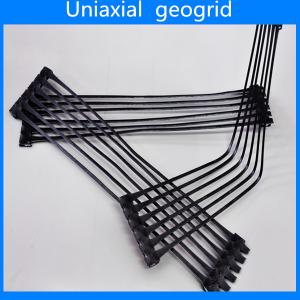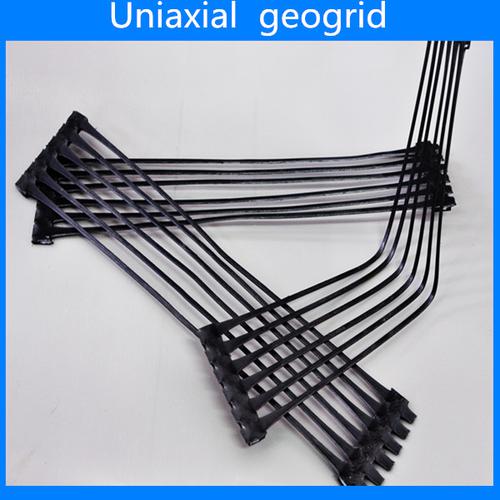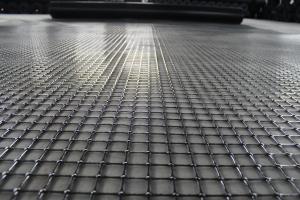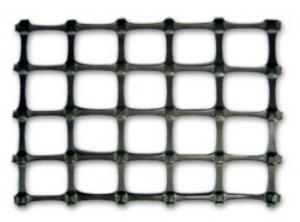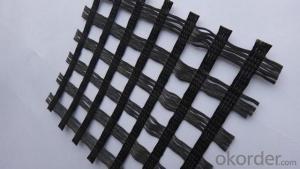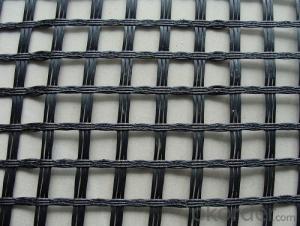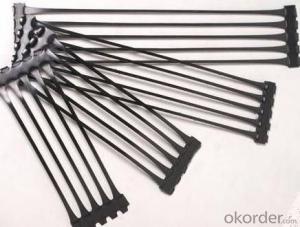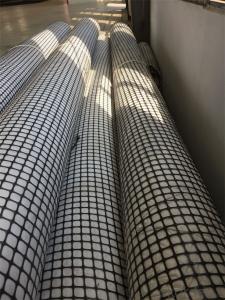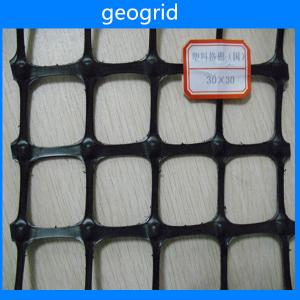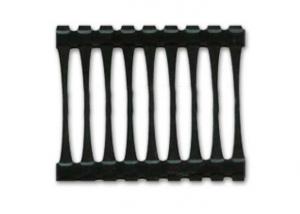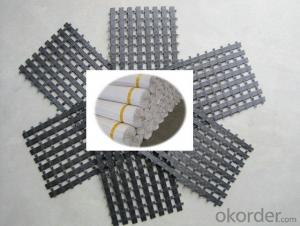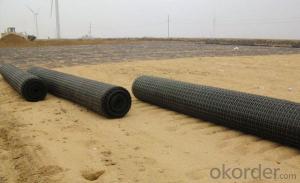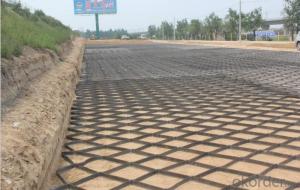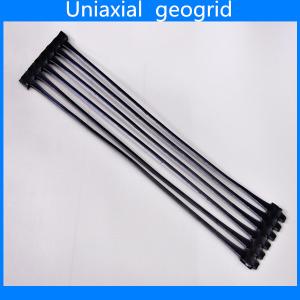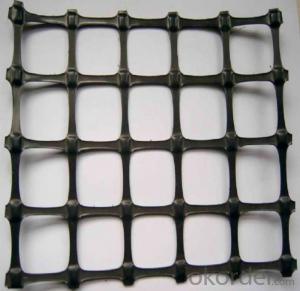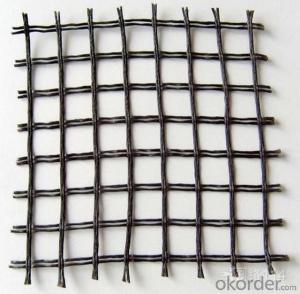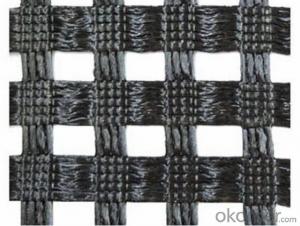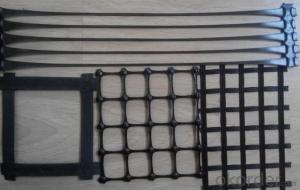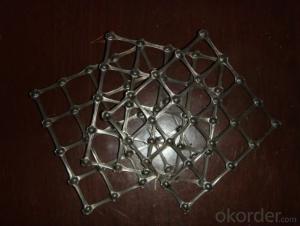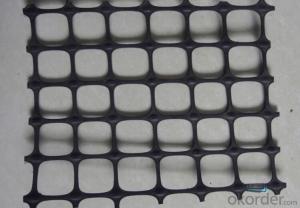Tenax Uniaxial Tensile Plastic Geogrid
- Loading Port:
- Tianjin
- Payment Terms:
- TT OR LC
- Min Order Qty:
- -
- Supply Capability:
- 350000m2 m²/month
OKorder Service Pledge
OKorder Financial Service
You Might Also Like
Item: Uniaxial geogrid for road reinforcement
1.Material:PP or HDPE
2.Elongation:11.5%
3.Tensile strength:50KN/M
4. Size:2.5m*50M or Customerised
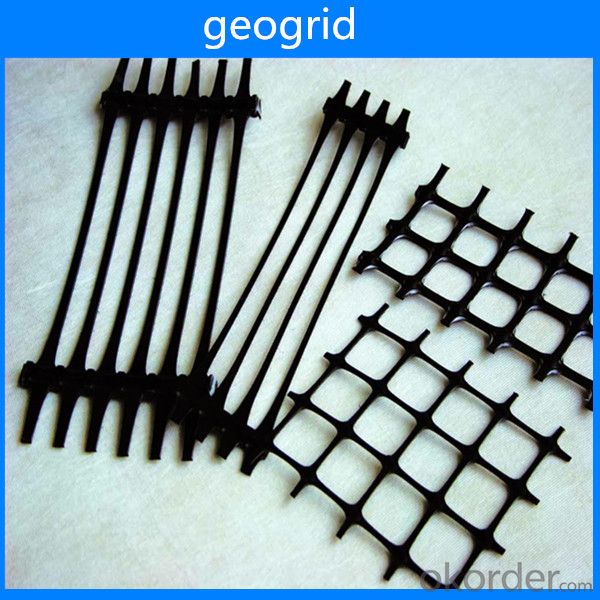
Unidirectional tensile plastic geogrid is extruded by macromolecule polymers,and formed by longitudinal tension,This kind of geogrid is integrity with uniform distributed elliptical net structures.It has high tensile strength and tensile modulus.With this kind of structure ,the geogrid provides an ideal interlock system for the soil.It has high unidirectional strength and endurance,and high lareral restraints for soil-rock mixtures,
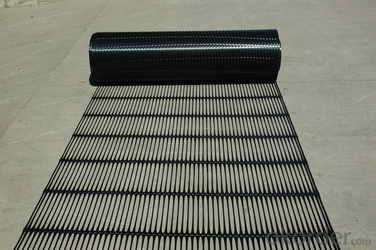
Features:
With high tensile strength and tensile modulus
Functions:Uniaxial geogrid is mainly applied in highway,railway,slope protecting projects,retaining wall,dam to strengthen land loading capacity and extend its service life.Features in reducing area,project cost and maintenance cost,convenient to construct.
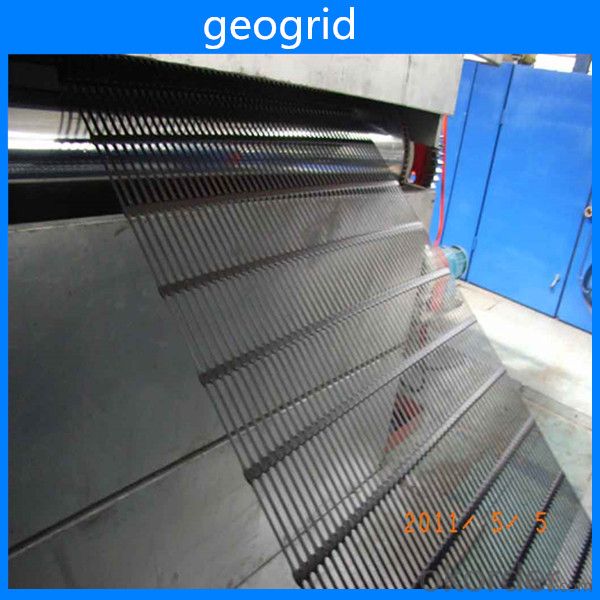
- Q: Can geogrids be used in environmental containment systems?
- Yes, geogrids can be used in environmental containment systems. They are often employed as reinforcement materials in various containment applications such as landfills, ponds, lagoons, and waste storage areas. Geogrids help enhance the stability and integrity of the containment system by providing structural support and preventing soil erosion. They are designed to withstand heavy loads and provide long-term durability, making them suitable for use in environmental containment systems.
- Q: Can geogrids be used in reinforcement of embankments?
- Yes, geogrids can be used in the reinforcement of embankments. Geogrids are commonly used in civil engineering projects to improve the stability and strength of soil structures, such as embankments. They are designed to increase the bearing capacity of soils, redistribute loads, and prevent soil erosion. By incorporating geogrids into embankments, it helps to enhance their overall stability and prevent potential failures.
- Q: Can geogrids be used in retaining walls for waterfront applications?
- Yes, geogrids can be used in retaining walls for waterfront applications. Geogrids are commonly used in such applications to reinforce and stabilize the soil behind the retaining wall, providing additional strength and preventing potential erosion or failure.
- Q: How do geogrids help in reducing construction costs?
- Geogrids help in reducing construction costs by providing reinforcement and stabilization to soil, allowing for the use of less expensive and lower quality materials. They also minimize the need for excavation, backfill, and compaction, resulting in reduced labor and equipment costs. Moreover, geogrids enhance the lifespan of structures by preventing soil erosion and settlement issues, reducing the need for costly repairs in the long run.
- Q: How much is a square meter
- 4, geogrid reinforced airport foundation can greatly improve the bearing capacity of the runway, to ensure the safety of aircraft landing5, geogrid can be used for garbage disposal, power plants, ash dam project, coal mine, metallurgy, green, enclosure and other fields6, the construction of soft foundation reinforcement, improve the overall bearing capacity of the foundation
- Q: Are geogrids effective in erosion control?
- Yes, geogrids are effective in erosion control. They provide stability and reinforcement to soil, preventing erosion by holding the soil in place and reducing the movement of sediments. Geogrids also improve the load-bearing capacity of the soil, making them suitable for various erosion control applications such as retaining walls, slopes, and embankments.
- Q: What are the factors that affect the installation and survivability of geogrids in cold climates?
- The factors that affect the installation and survivability of geogrids in cold climates include the type and quality of geogrid material, proper preparation of the subgrade, adequate compaction of the soil, temperature variations, frost heave, snow accumulation, and freeze-thaw cycles.
- Q: What are the factors that affect the installation time of geogrids?
- There are several factors that can affect the installation time of geogrids. Some of the key factors include the size and complexity of the project, the type and condition of the soil, the equipment and manpower available, and any unforeseen challenges or obstacles encountered during the installation process. Additionally, factors such as weather conditions and site accessibility can also impact the installation time.
- Q: Can geogrids be used in ground reinforcement for airports?
- Yes, geogrids can be used in ground reinforcement for airports. Geogrids are commonly employed in the construction industry to reinforce and stabilize soil, including areas with heavy traffic such as airports. They can effectively distribute loads and improve the strength of the ground, ensuring the stability and durability required for airport infrastructure.
- Q: Can geogrids be used in coastal erosion control?
- Yes, geogrids can be used in coastal erosion control. Geogrids are often employed as a reinforcement material to stabilize soil and prevent erosion in coastal areas. They can be used to strengthen slopes, retain beach or dune materials, and provide stability to coastal structures like seawalls or revetments. Geogrids are designed to withstand the harsh coastal environment and can effectively reduce the impact of wave and tidal action on the shoreline, making them a valuable tool in coastal erosion control efforts.
Send your message to us
Tenax Uniaxial Tensile Plastic Geogrid
- Loading Port:
- Tianjin
- Payment Terms:
- TT OR LC
- Min Order Qty:
- -
- Supply Capability:
- 350000m2 m²/month
OKorder Service Pledge
OKorder Financial Service
Similar products
Hot products
Hot Searches
Related keywords
